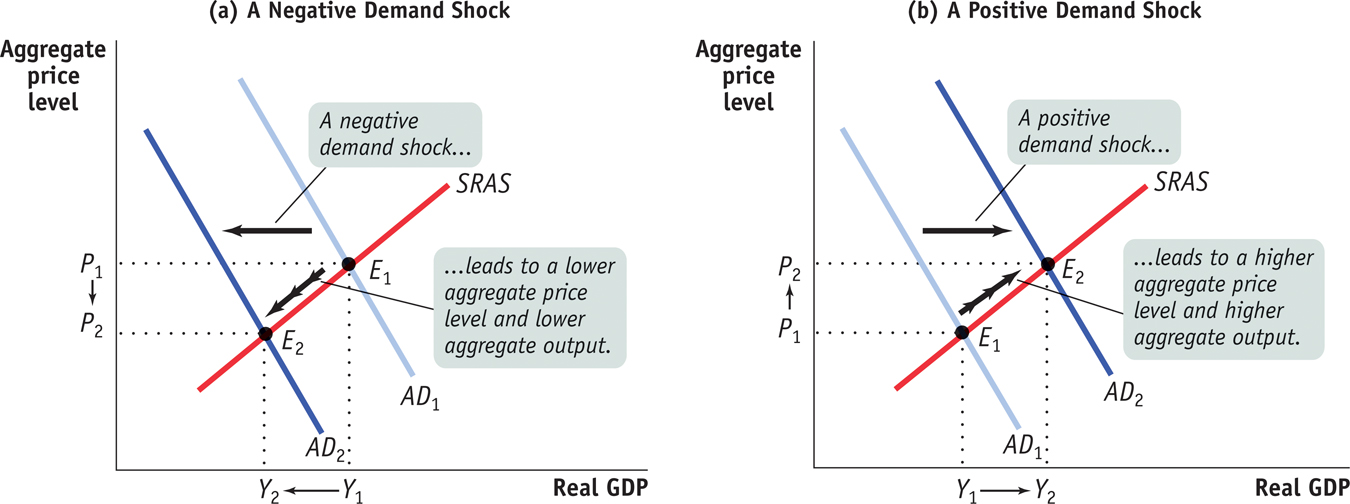Shifts of Aggregate Demand: Short-Run Effects
An event that shifts the aggregate demand curve is a demand shock.
An event that shifts the aggregate demand curve, such as a change in expectations or wealth, the effect of the size of the existing stock of physical capital, or the use of fiscal or monetary policy, is known as a demand shock. The Great Depression was caused by a negative demand shock, the collapse of wealth and of business and consumer confidence that followed the stock market crash of 1929 and the banking crisis of 1930–1931.
The Depression was ended by a positive demand shock—the huge increase in government purchases during World War II. In 2008 the U.S. economy experienced another significant negative demand shock as the housing market turned from boom to bust, leading consumers and firms to scale back their spending.
Figure 12-12 shows the short-run effects of negative and positive demand shocks. A negative demand shock shifts the aggregate demand curve, AD, to the left, from AD1 to AD2, as shown in panel (a). The economy moves down along the SRAS curve from E1 to E2, leading to lower short-run equilibrium aggregate output and a lower short-run equilibrium aggregate price level. A positive demand shock shifts the aggregate demand curve, AD, to the right, as shown in panel (b). Here, the economy moves up along the SRAS curve, from E1 to E2. This leads to higher short-run equilibrium aggregate output and a higher short-run equilibrium aggregate price level. Demand shocks cause aggregate output and the aggregate price level to move in the same direction.

Demand Shocks A demand shock shifts the aggregate demand curve, moving the aggregate price level and aggregate output in the same direction. In panel (a), a negative demand shock shifts the aggregate demand curve leftward from AD1 to AD2, reducing the aggregate price level from P1 to P2 and aggregate output from Y1 to Y2. In panel (b), a positive demand shock shifts the aggregate demand curve rightward, increasing the aggregate price level from P1 to P2 and aggregate output from Y1 to Y2.
